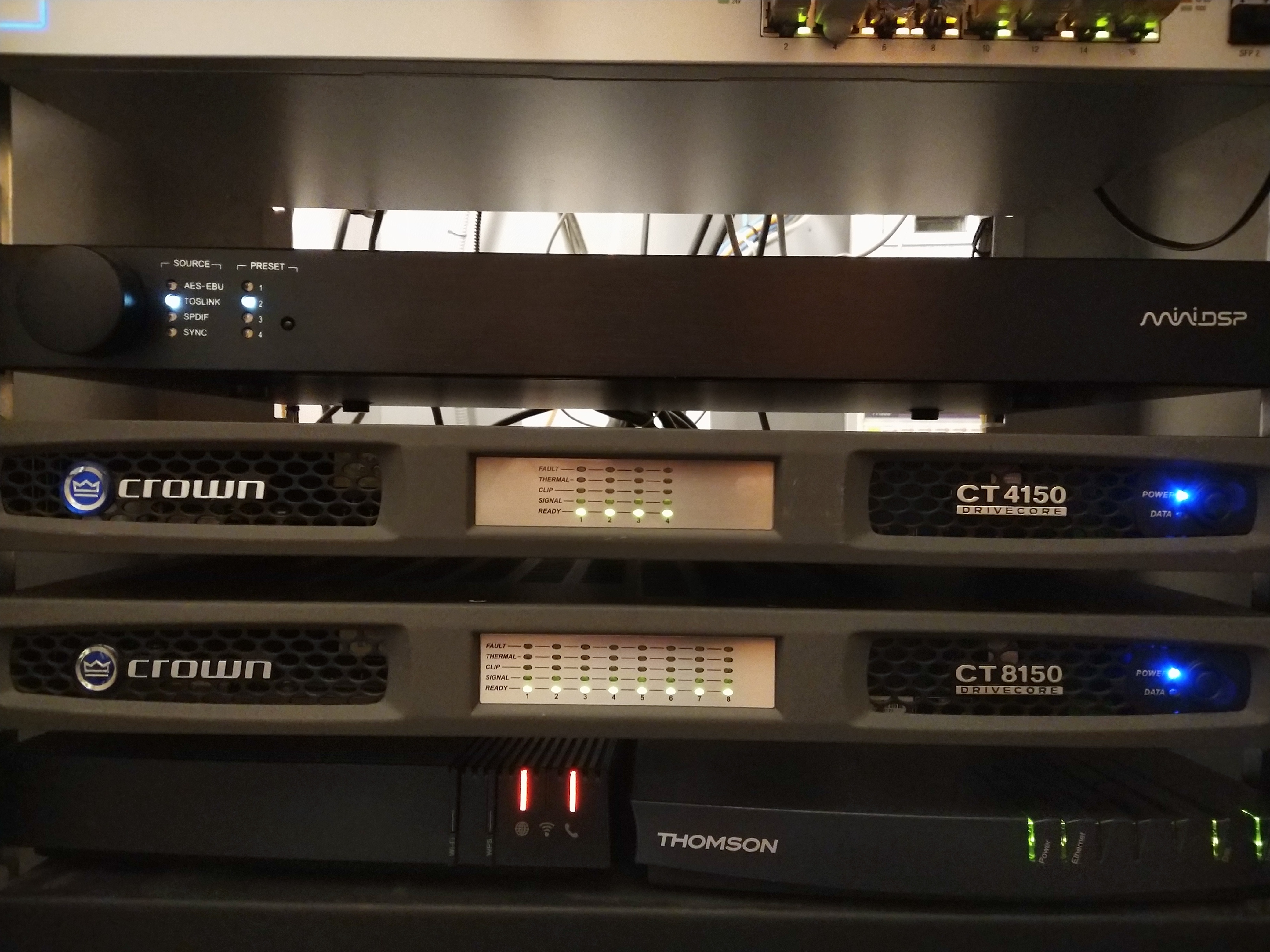
High end multi-room sound system (offline/no-cloud)
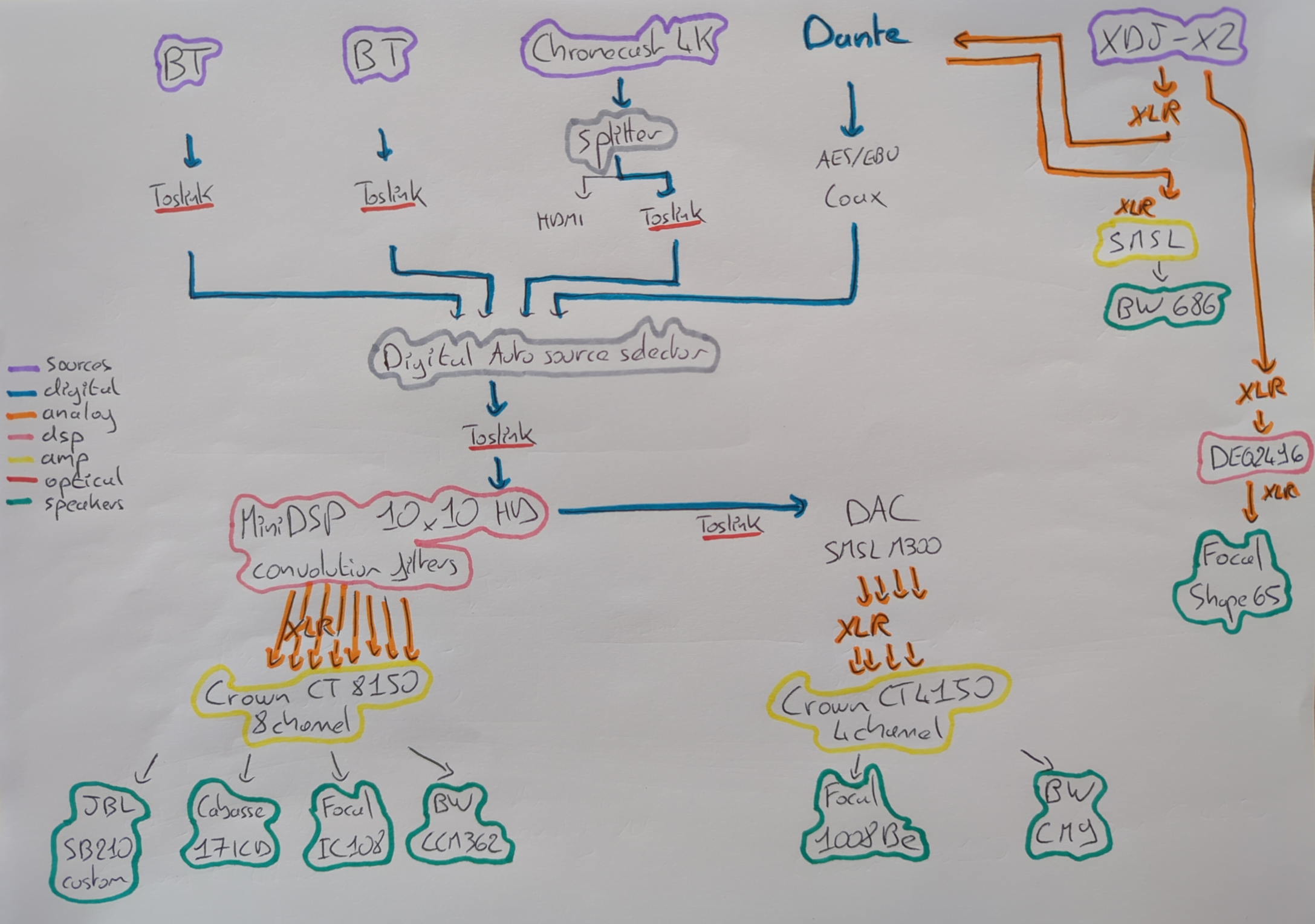
Goals of the system
- be offline
- be software agnostic
- be remote control free
- accept any relevant audio source (bluetooth, XDJ, chromecast)
- never compromise on audio quality
- allow for low power consumption when idle
- produce extremely clear sound everywhere
- produce audio in all rooms of the house
In plain english : It allows me to play music of my Android phone on Spotify, or play a Youtube video on my Debian laptop, or start mixing on my XDJ-XZ, or play a movie on the Chromecast 4K in the movie room and... have the sound automatically get out of each and every speakers of the house, with state of the art quality on each of them.
Keys to reach the goals
- Bluetooth AptX audio streaming
- Automatic digital signal detector/switchbox
- Keeping the signal in the digital realm for as long as possible
- MiniDSP 10x10 HD and DEQ2496 to adjust audio signal for each room
- Crown CT amplifiers (Premium Class-D with deep sleep and auto standby)
Components of the system
- 2x Bluetooth receivers, with digital toslink output (retired in 2025)
- Chromecast 4K (retired in 2025)
- HDMI Audio/Video splitter (retired in 2025)
- Automatic digital source selector (retired in 2025)
- MiniDSP 10x10 HD
- Berhinger DEQ2496
- Crown CT 8150
- Crown CT 4150 (retired in 2025)
- SMSL DA-8s
- SMSL M300 (retired in 2025)
- Hypex NCx500 (x2)
- JBL SB210 DIY subwoofers
- Cabasse ICD17 DIY spheres
- Focal IC108
- Focal 1008 Be (sold to a relative in 2025)
- Focal Shape 65
- Focal Sopra N°3
- B&W CCM362
- B&W CM9 (sold to a relative in 2025)
- B&W 686
- Cabasse Baltic II (2)
- 2x Dante XLR
- Dante AES/EBU
- Dante Bluetooth
Audio routing
The audio routing goes as follows : [...] writting in progress...
In the meantime, it is explained in this video.
Sidenotes
Regarding the two SB210 subwoofers, those are speakers recycled from my old JBL SB210. I contacted JBL to obtain the datasheet of the speaker and designed enclosures that get down to around 28Hz -3dB instead of the stock 46Hz -10dB. Enclosure are build using 38mm MDF and sound incredible.
Regarding the two Shape 65, they are only connected to the DEQ2496. And the DEQ is connected to the XDJ-XZ's booth output. The DEQ corrects for the position of the DJ in front of the XDJ. Therefore, when the XDJ plays, the main audio is sent to the whole room, and its booth output allow to adjust the return in the Shape65, with an audio correction so that the audio at the DJ's listening point is perfect.
Regarding the Cabasse ICD17, they are in sphere enclosures designed and built myself a long time ago. It's a closed speaker design. Idea came from Cabasse's famous "La Sphere" high end speakers.
The bay
When I renovated the house in 2017 (technically, we only kept the foundational elements), I placed lots of ethernet cables (Category 7) and speaker cables (2.5mm² and 4mm²). This was with the goal of diffusing music in the whole house and not being blocked by the lack of networking ports.
This is why all the house in fed by the following Dante network, DSP, DAC and amplifiers.
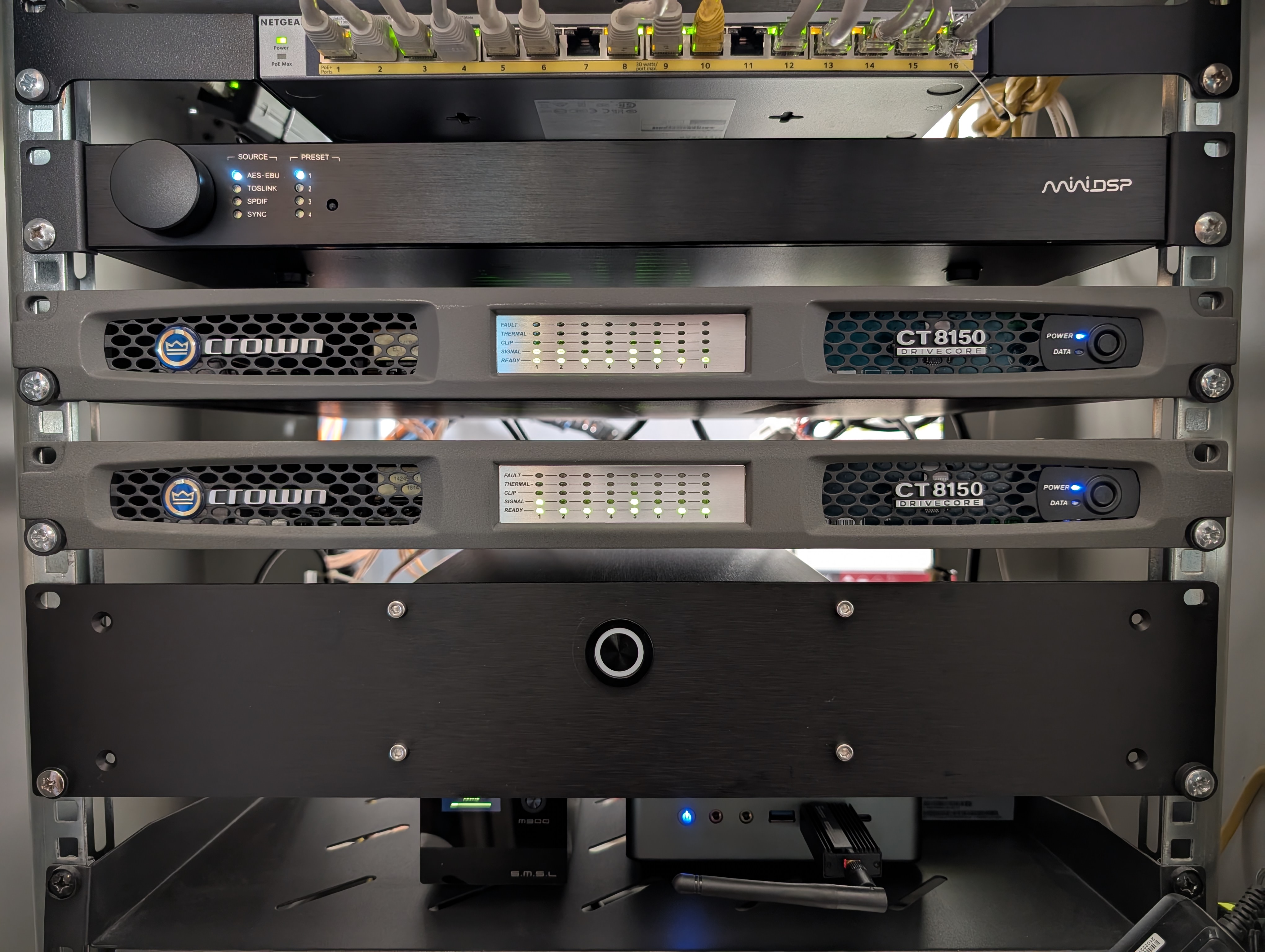
The DSP is exclusively fed by a digital signal (AES-EBU) from the Dante network.
8 of its analog output are sent via differentials pairs the CT8150 to different speakers of the house, with some delay and EQ. Including the two DIY JBL subwoofer (filtered from 15Hz to 70Hz).
Its digital output (without any audio processing) goes into the SMSL M300 DAC, which in turns feeds via differential pairs the CT4150, which in turns feeds the B&W CM9 in the music room, and the Focal Sopra 3 in the living room. I'm planning on upgrading to a second CT8150 to bi-amplify the B&W CM9 (and hopefully avoid loosing definition in the mid/high when pushing them hard).
Sadly Focal decided to cheap out on the bi-amplification capability of the Sopra 3, which honestly in unforgivable given the price point.
Speakers list

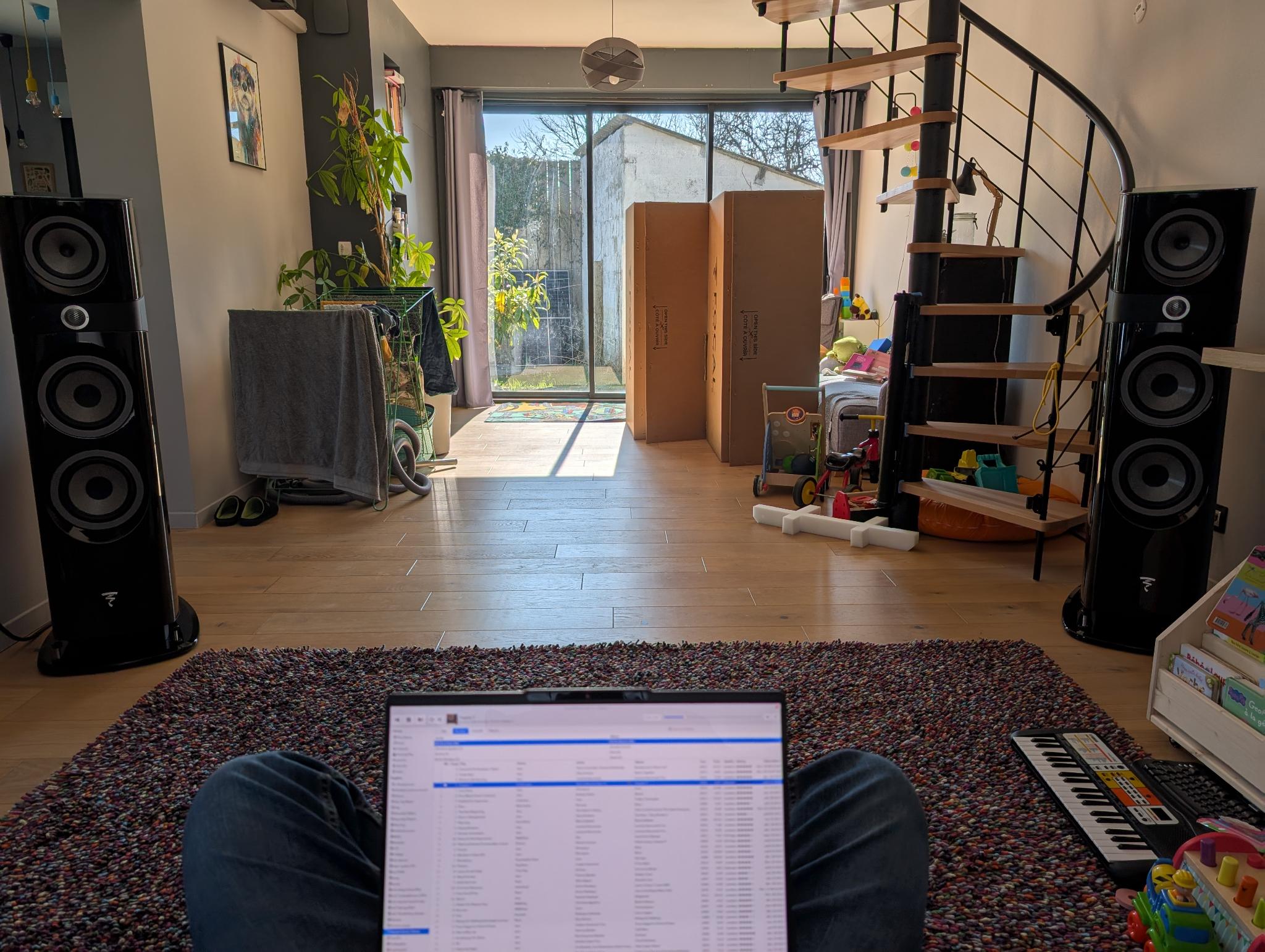
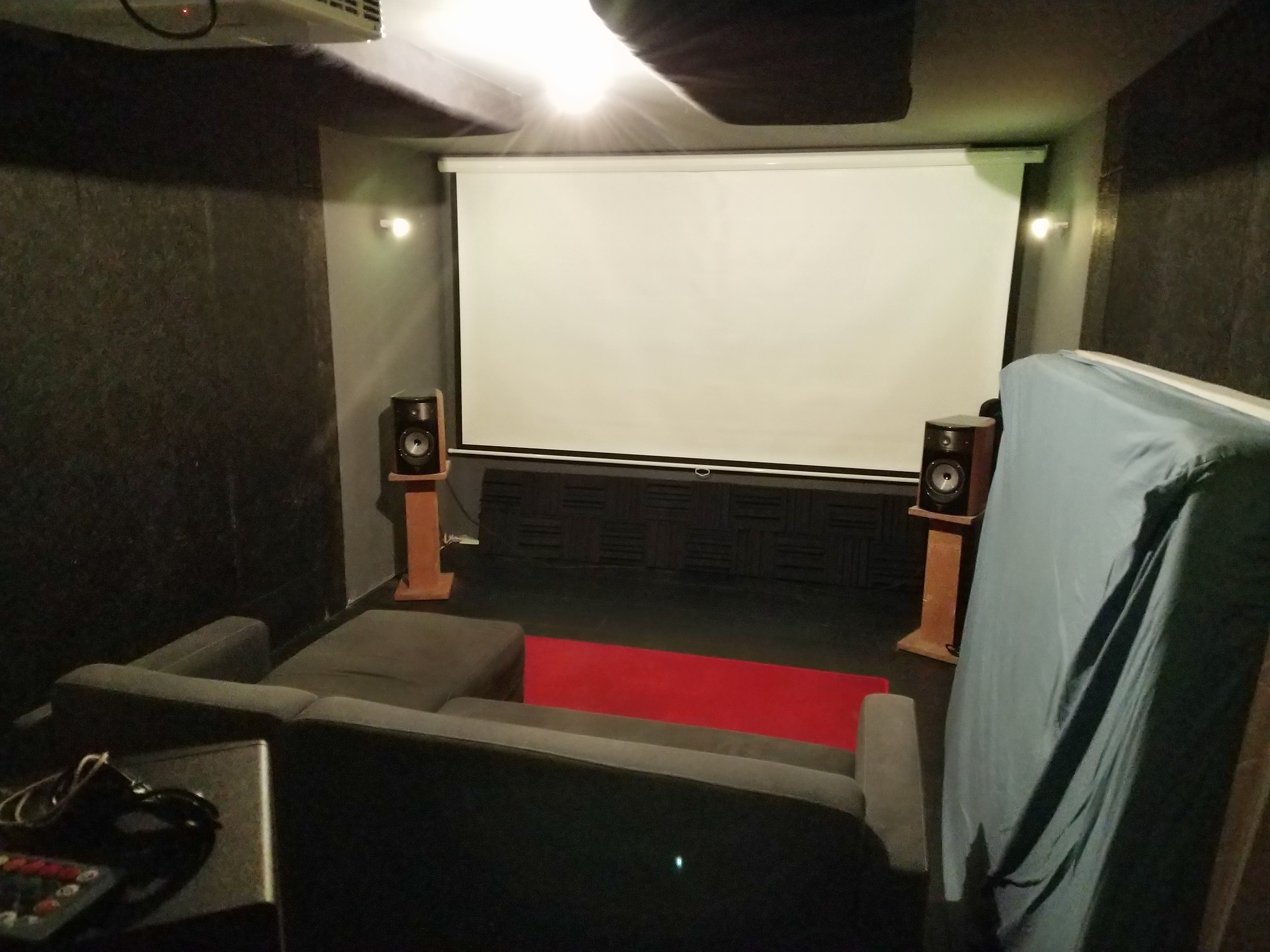
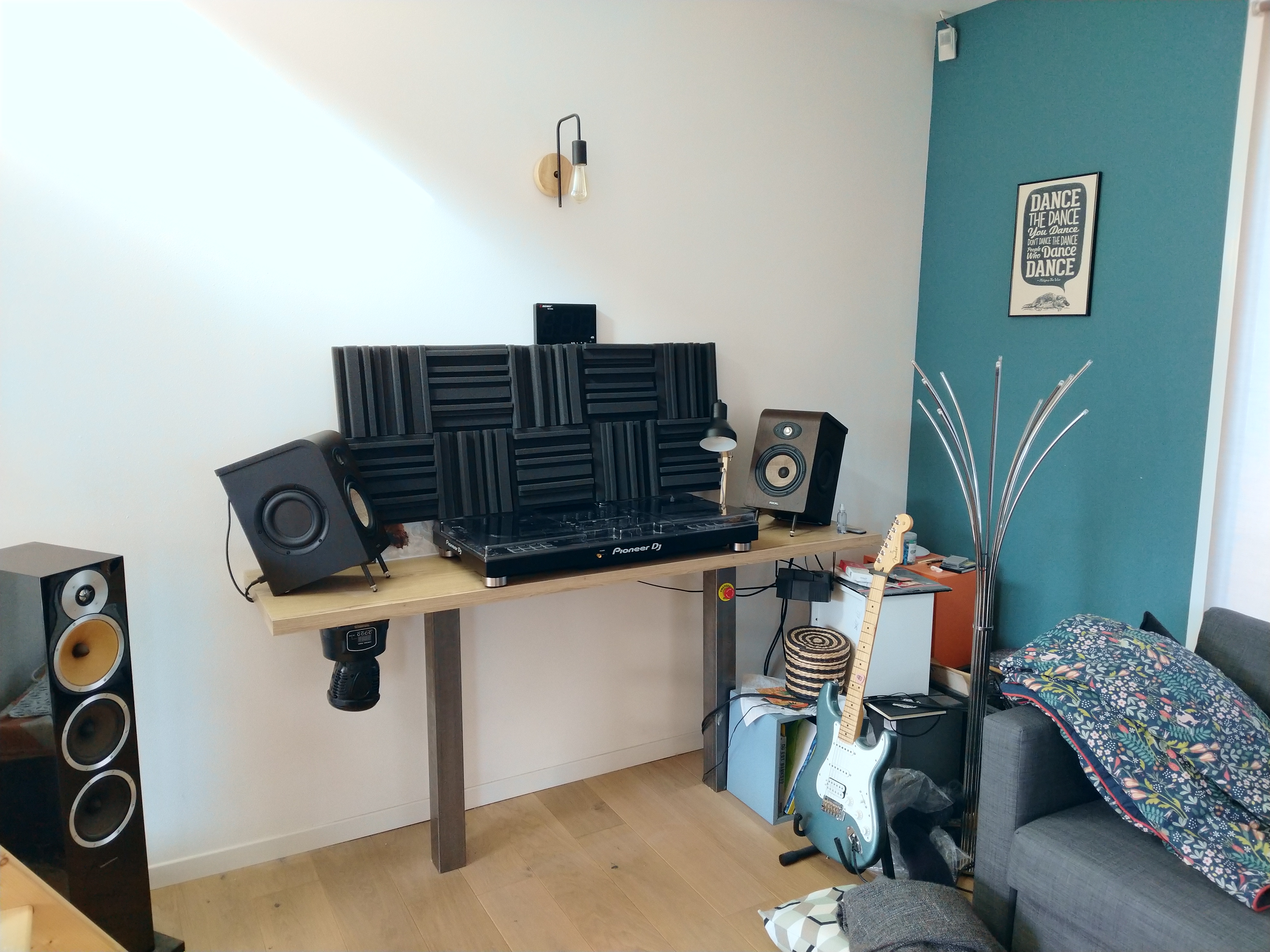
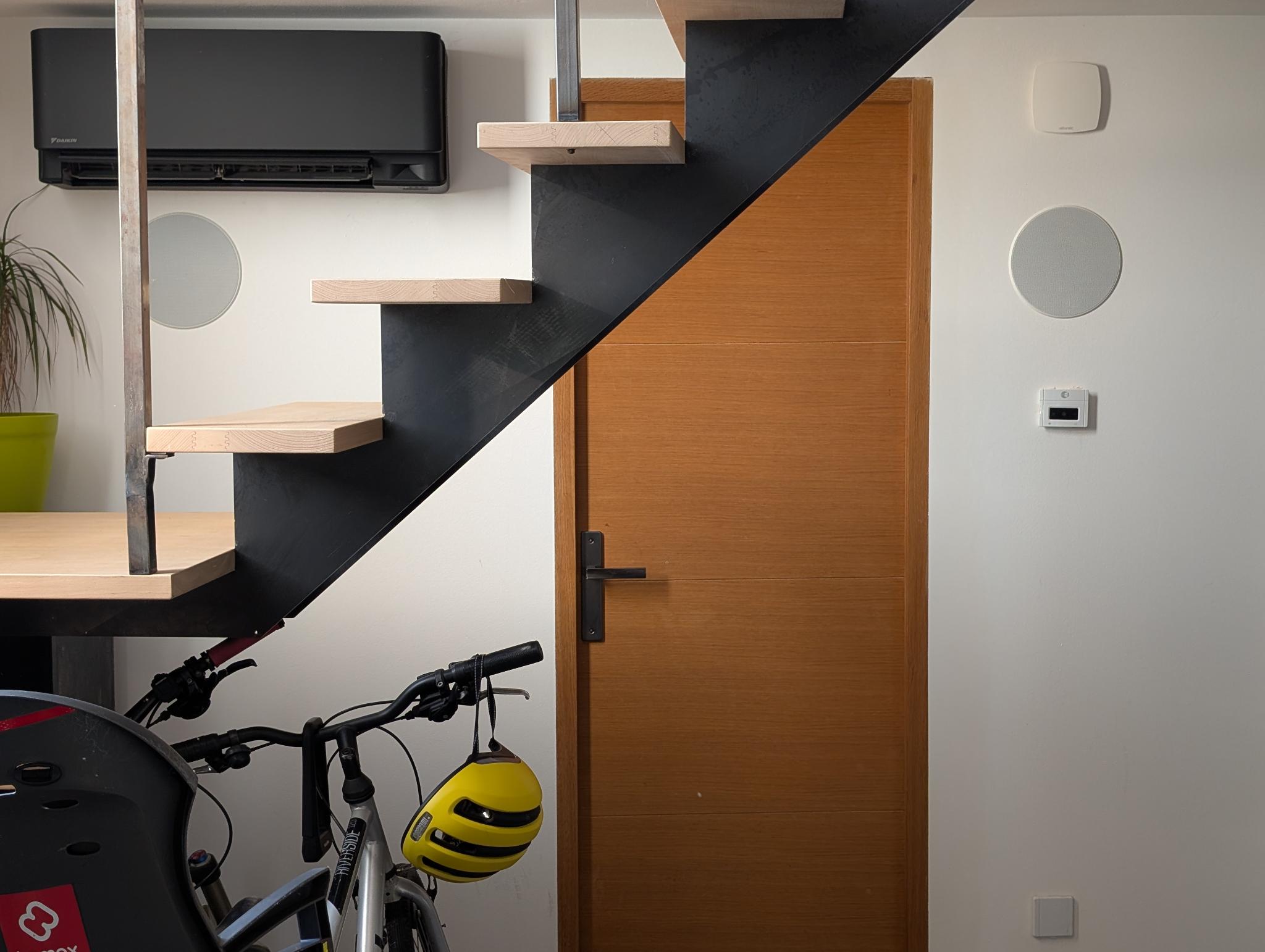
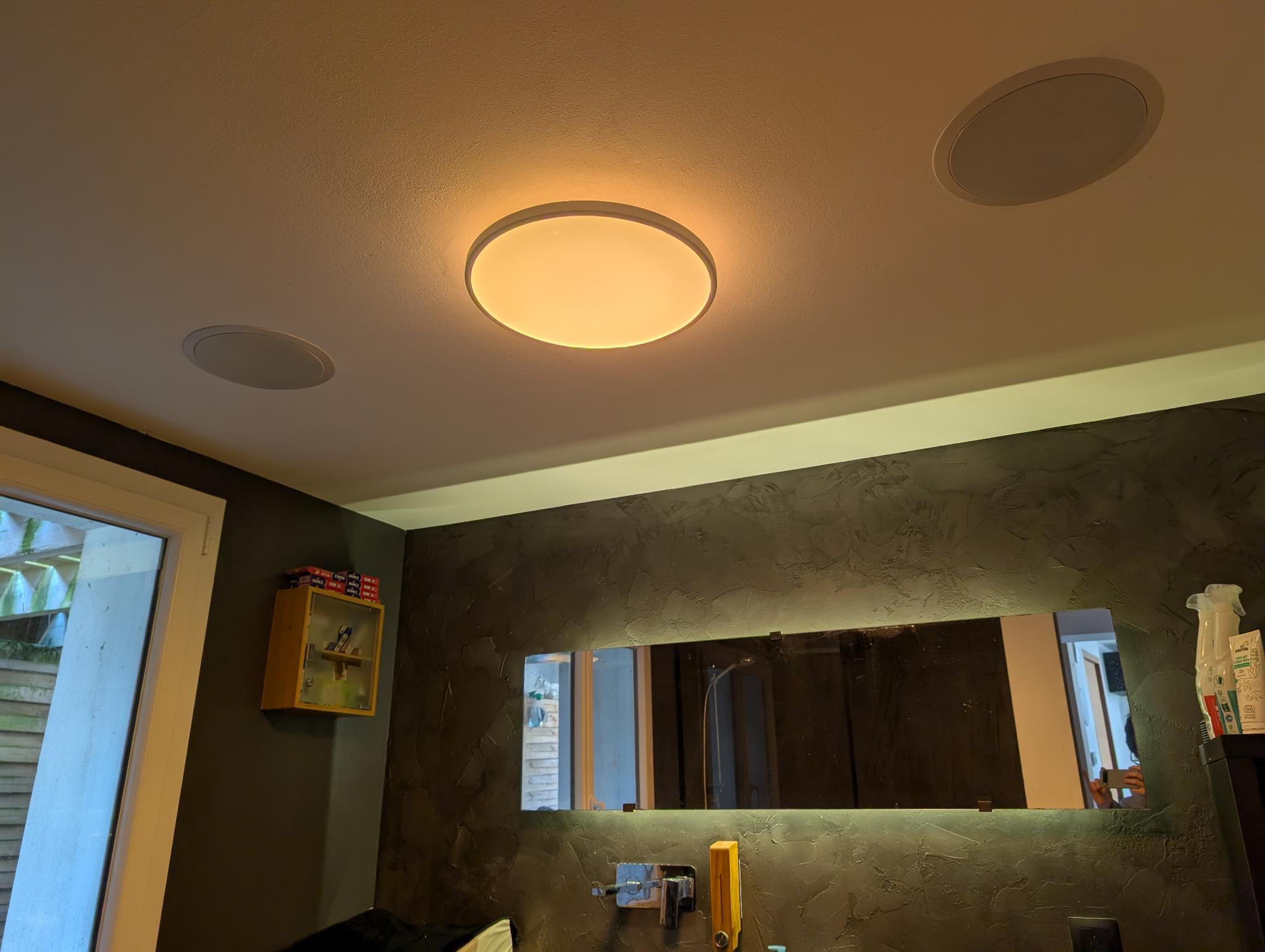
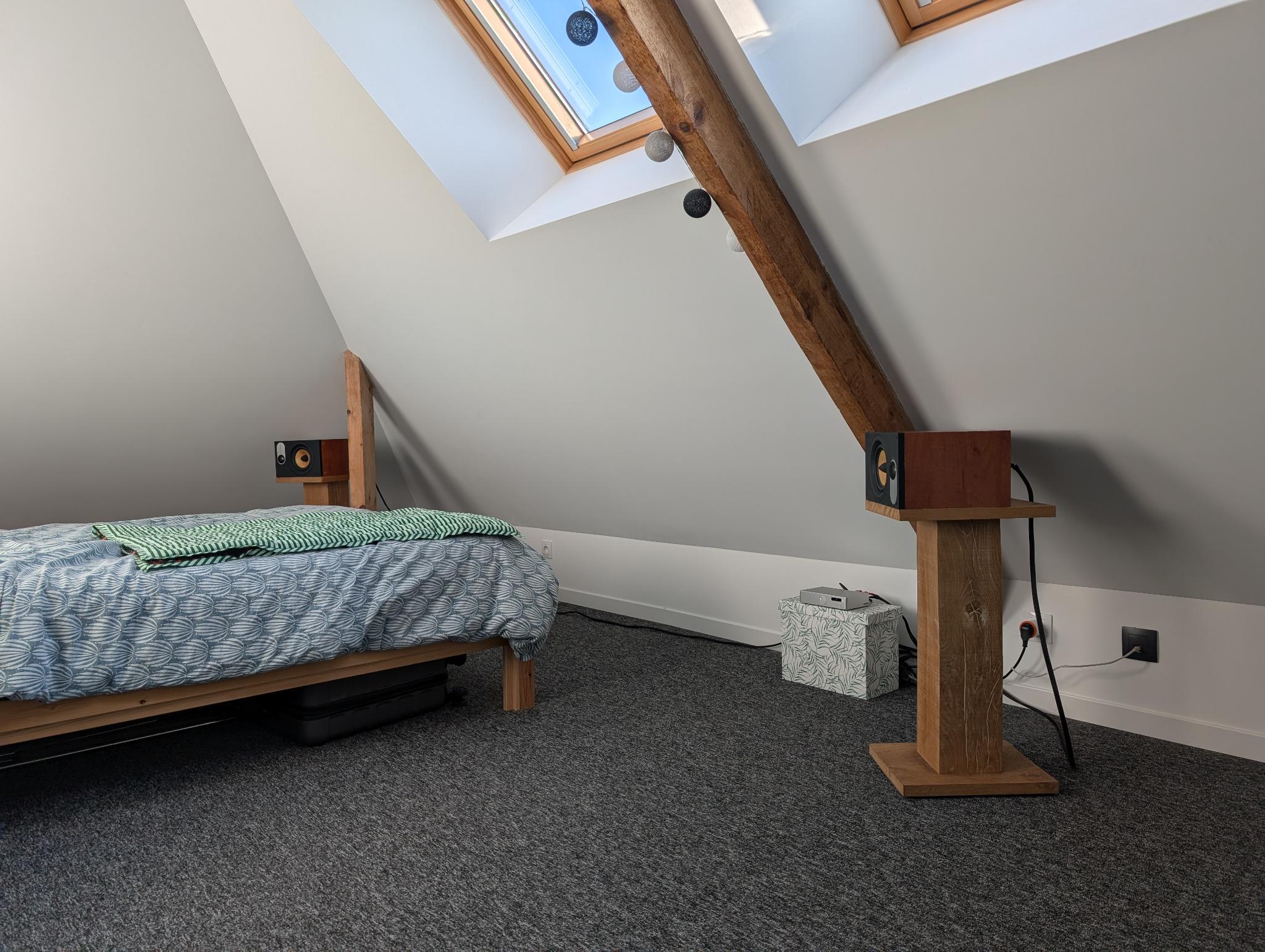
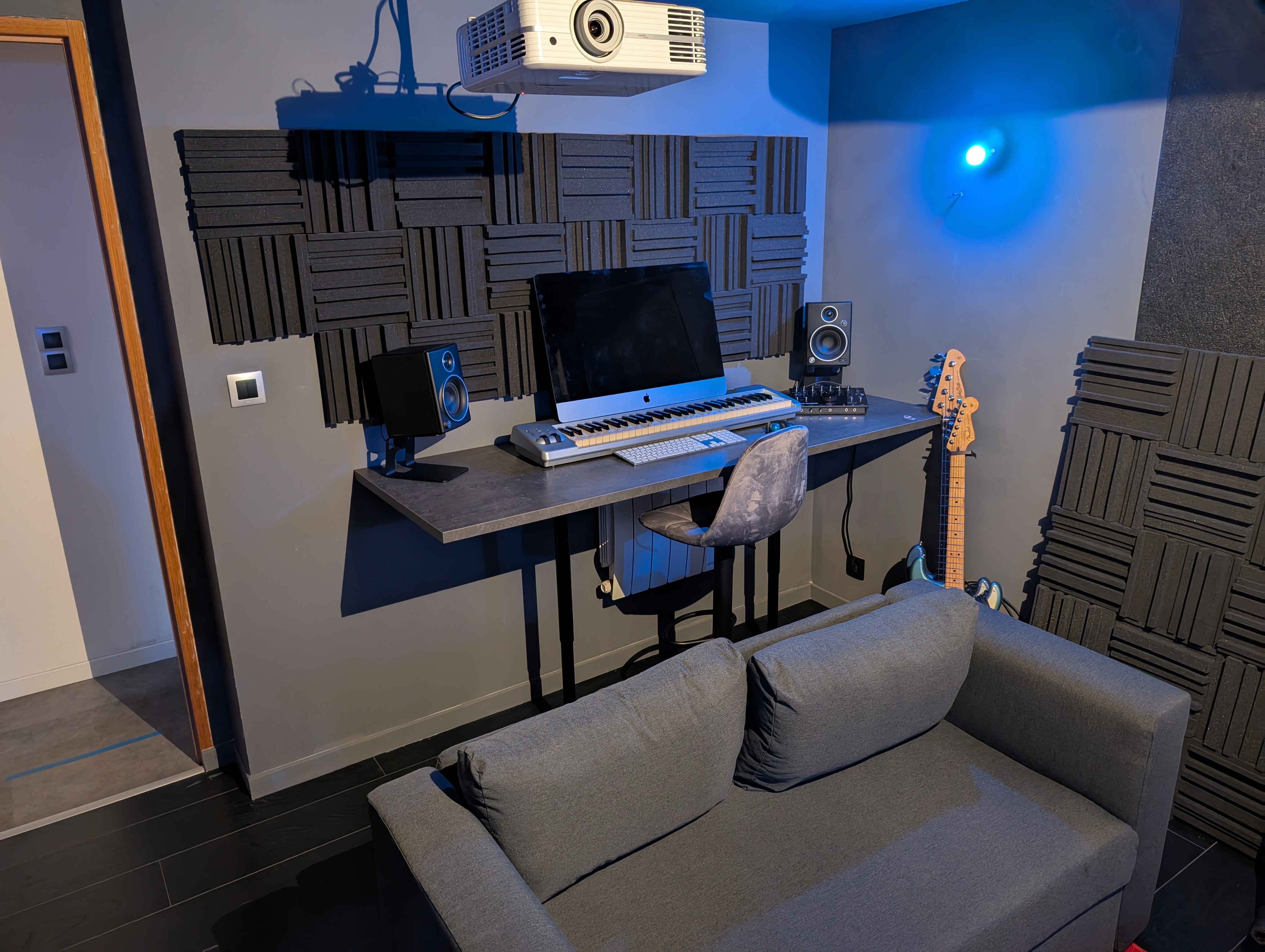

Blindspots
Currently, only the music production computer, a subcompact Dell Optiplex running MacOS/Hackintosh with an old version of Ableton is not connected to the house's audio system. It has its own monitor speakers and I should connect the whole thing using Dante to leverage the B&W CM9 of the music room instead of the cheap Mackie. But as I almost never get on that computer, it still hasn't been done.
Early 2025 update
I started having issues with my automatic digital input source selector. It's a box produced by an individual, not from a big brand so I'm not going to bother him.
This was the triggering event for a rationalisation of the whole audio routing system.
I decided to ditch :
- the dual bluetooth receivers, in favor of a single, Dante bluetooth receiver (cutting the middle man)
- the Chromecast HDMI audio signal splitter (I don't have time to watch movies with my kid, so I might has well use my laptop directly)
I'm adding a new source : a USB-C Dante digital input. This allows me to stream in lossless from my laptop in the living room, directly to the Dante AES-EBU receiver that feeds the DSP. So I have a bit-perfect option for critical listening in the living room.
Now all sources are using Dante with 3 input devices in total.
- The XDJ-XZ uses a Dante XLR input
- The phone/laptop can use a Dante BT input (aptX)
- The phone/laptop can use a Dante USB-C input (lossless)
The routing to the AES-EBU/DSP is done manually via netaudio, a dante controller "port" for Linux.
Focal Sopra N°3
I ordered a pair of Focal Sopra N°3 to replace the B&W CM9 in the living room.
I've kinda messed up as a pair of B&W 800 D3 became available on the second hand market (altough at a steeper price) just 2 days after I placed my order for the Focal. But I couldn't back off from the transaction...
The CM9 have gone in the music/movie room, and I'm going to bi-amp them.
For that, the Crown CT4150 will be replaced by a CT8150. Giving me 4 more channels. And a total of 16 channels with the two CT8150.
The Electra 1008 Be from the music/movie room are now in the dining room. The spheres are staying here too, but they are not powered anymore, only serving as decorations.
Focal Sub 1000f
I bought a second-hand Focal sub 1000f with a dead amplifier board, since I have too many channels available on the Crown. I modified the plate to accept banana plugs and I'm now feeding it with one of the CT8150 channels. As it is a closed enclosure, response drops steeply at 50Hz (12dB/octave), so massive EQ gain around 30Hz is necessary. Its suspension is extremely stiff and it is made to handle 1000W with heavy DSP correction. Efficiency is poor, but it does the job as it sits in the lobby of the house.
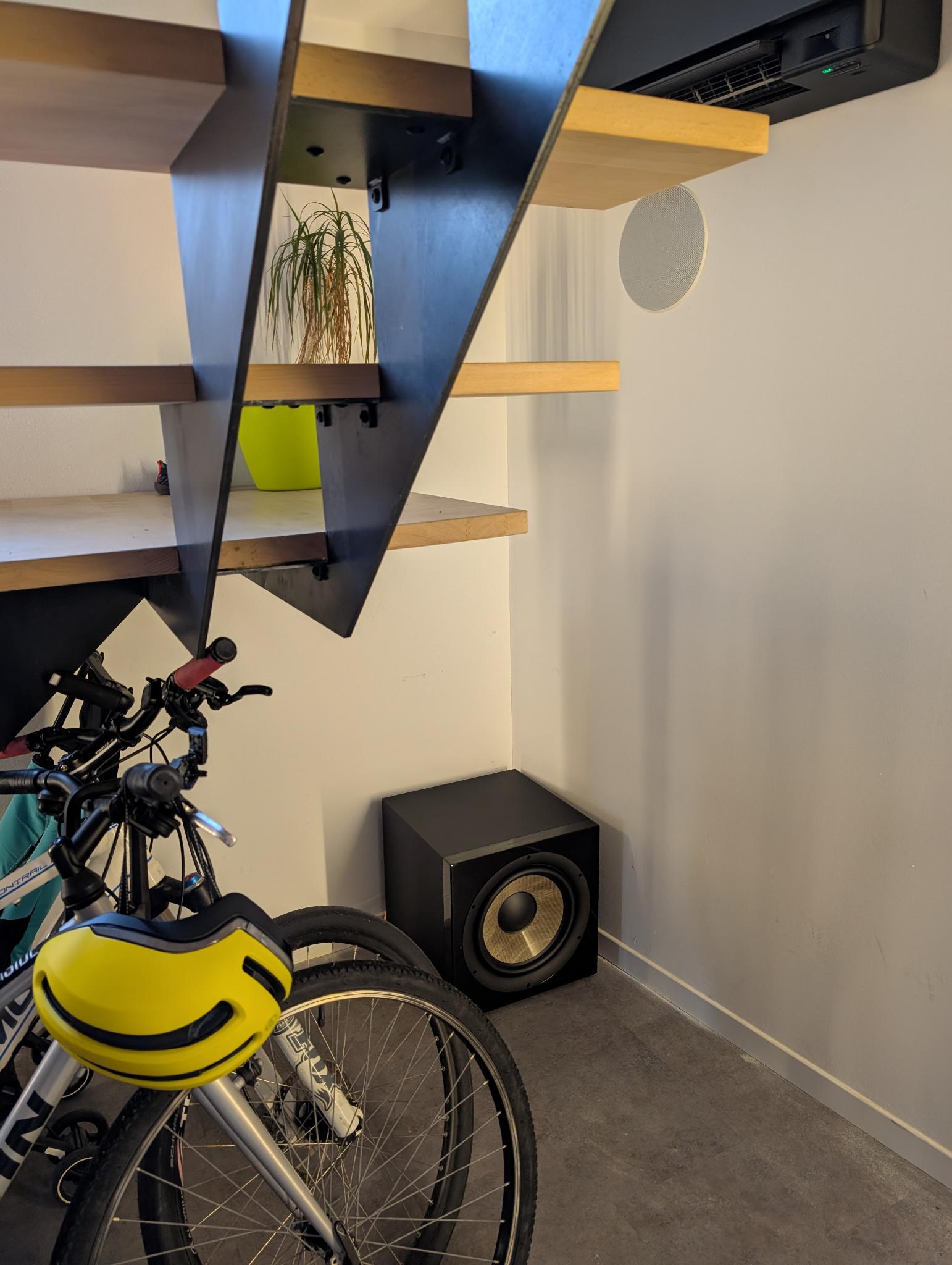
Cabasse Baltic II
Remembering a pair of Cabasse Java MC40 with SCS technology (coaxial) that I had 15 years ago, I got the temptation to go back to that technology.
They were probably the first speakers that introduced me to "hifi" sound.
Looking around, I found a pair of Baltic 2, which take the concept further by having all three drivers concentric. They are fairly compact and trade off the bass spectrum, only going down to 80Hz (with the help of a bass-reflex port !)
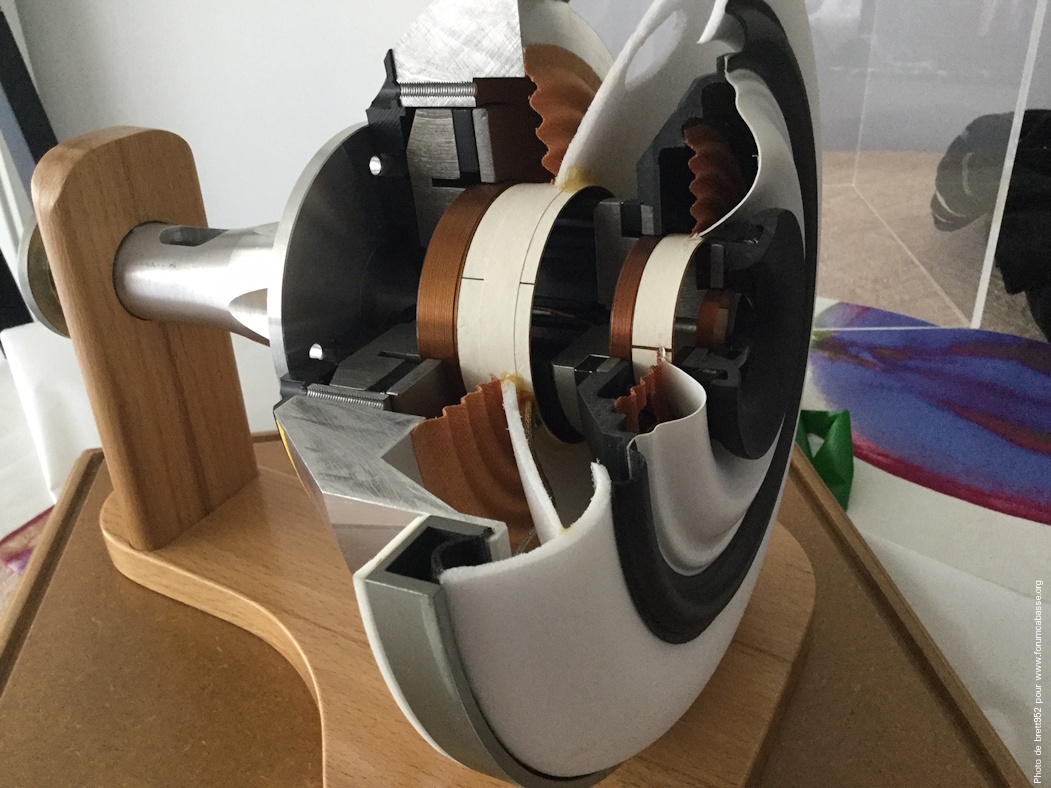
I had to use heavy EQing on the subs. I started by plugging the vents of the subwoofers with acoustics foam, which shaved the +6dB peak that I had at 30Hz. Lowering an additionnal 6dB around 30Hz with the DSP to get a flat response from 15Hz to 65Hz. Subs and Baltics have been time and phase-aligned using the DSP.
The sound is really good but no match for the Sopra 3. The Group Delay is not bad (max 32ms at 90Hz), distortion is low, but we're just not there.
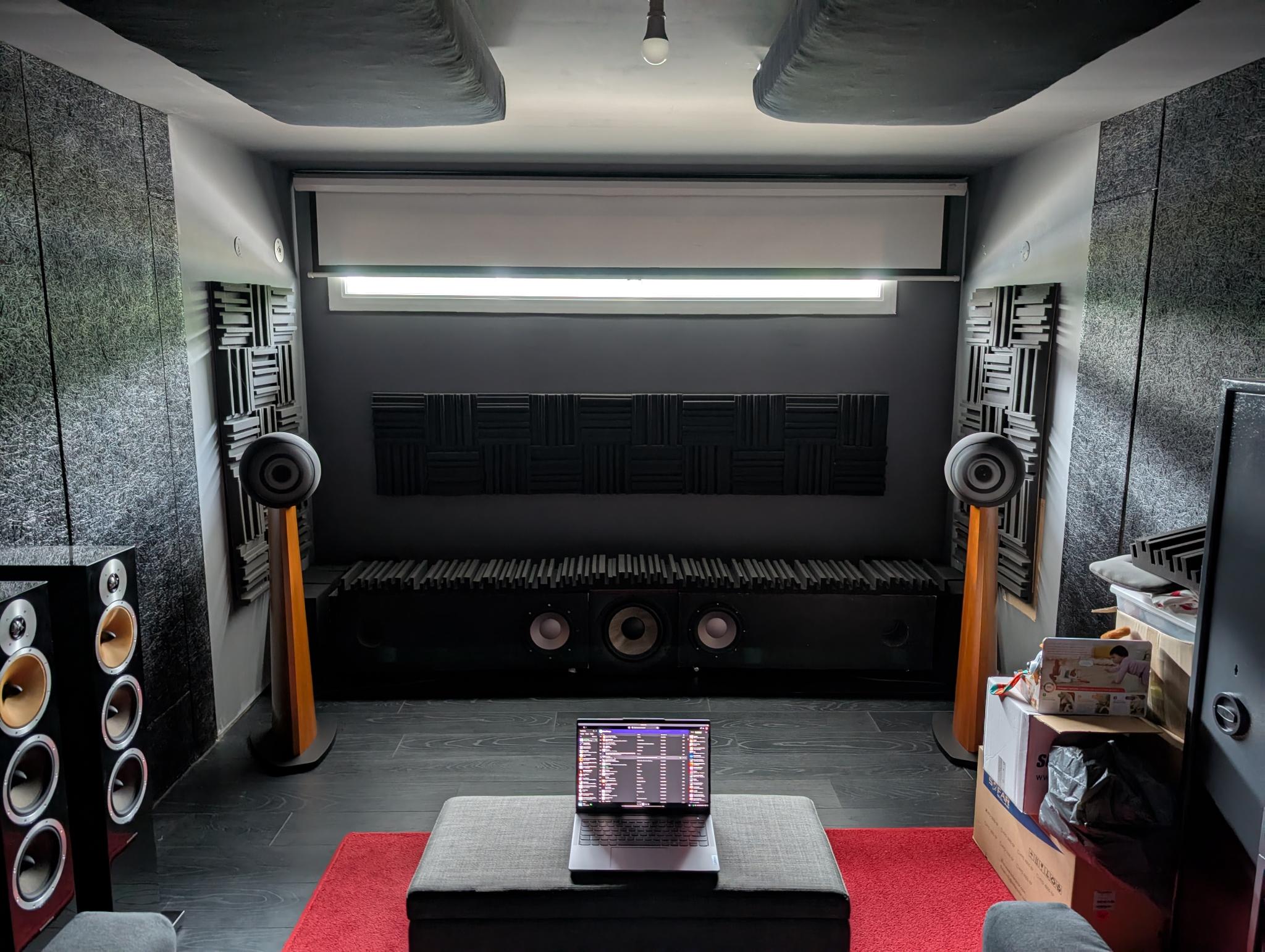
Note that on this picture, the 30cm Focal is not wired. It sits here as I attempted to get the JBL DIY to cover 15-45Hz and the large closed Focal 45-80Hz. But the Focal is over-damped and inefficient requiring insane amount of power to reach the Baltic's 93dB of efficiency.
Measurements
Bellow are in-room measurements of the Sopra3 in the living room, and Baltic 2 + JBL DIY in the music room. 1/3 octave smoothing.

Bellow are the EDT and RT60 of the living room and music room.
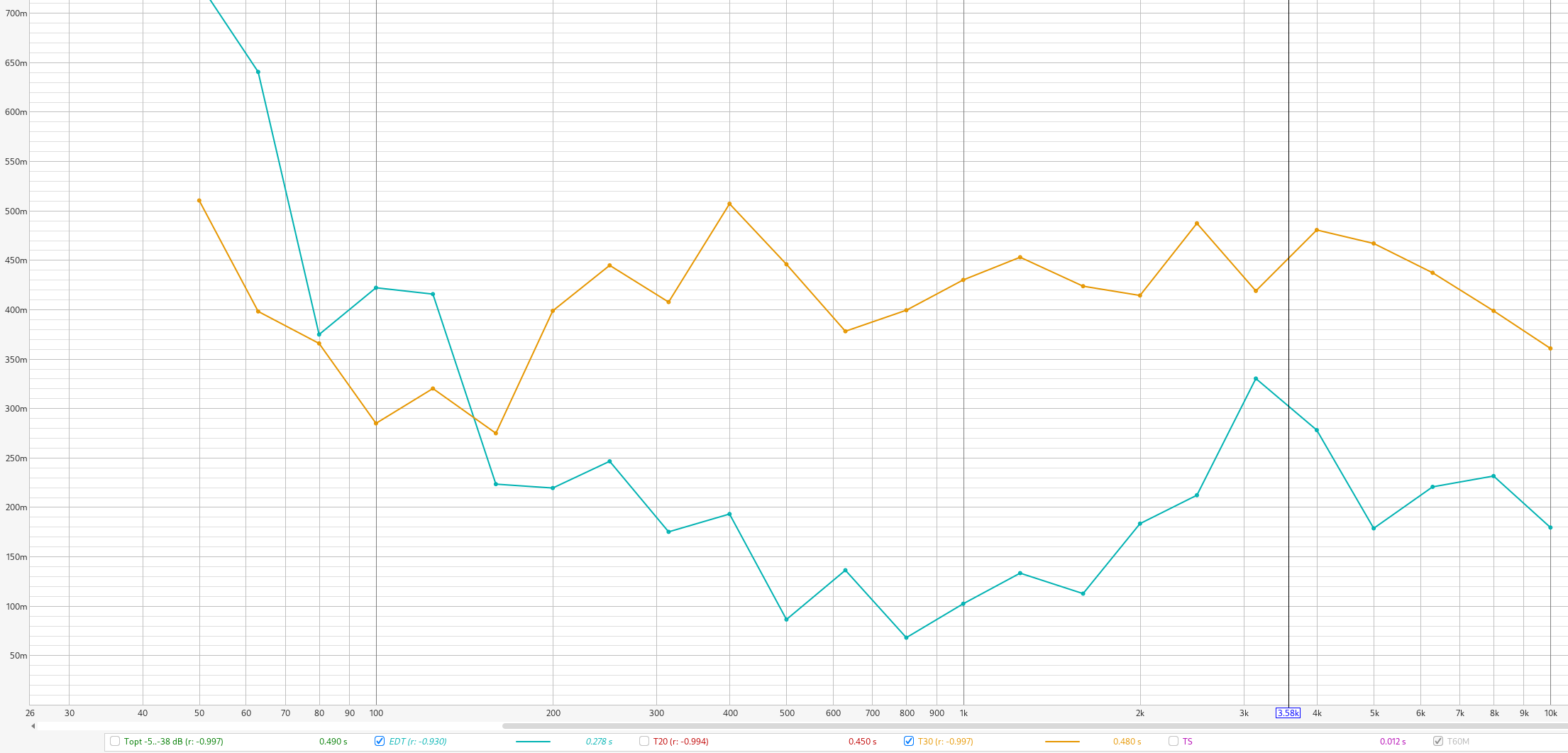
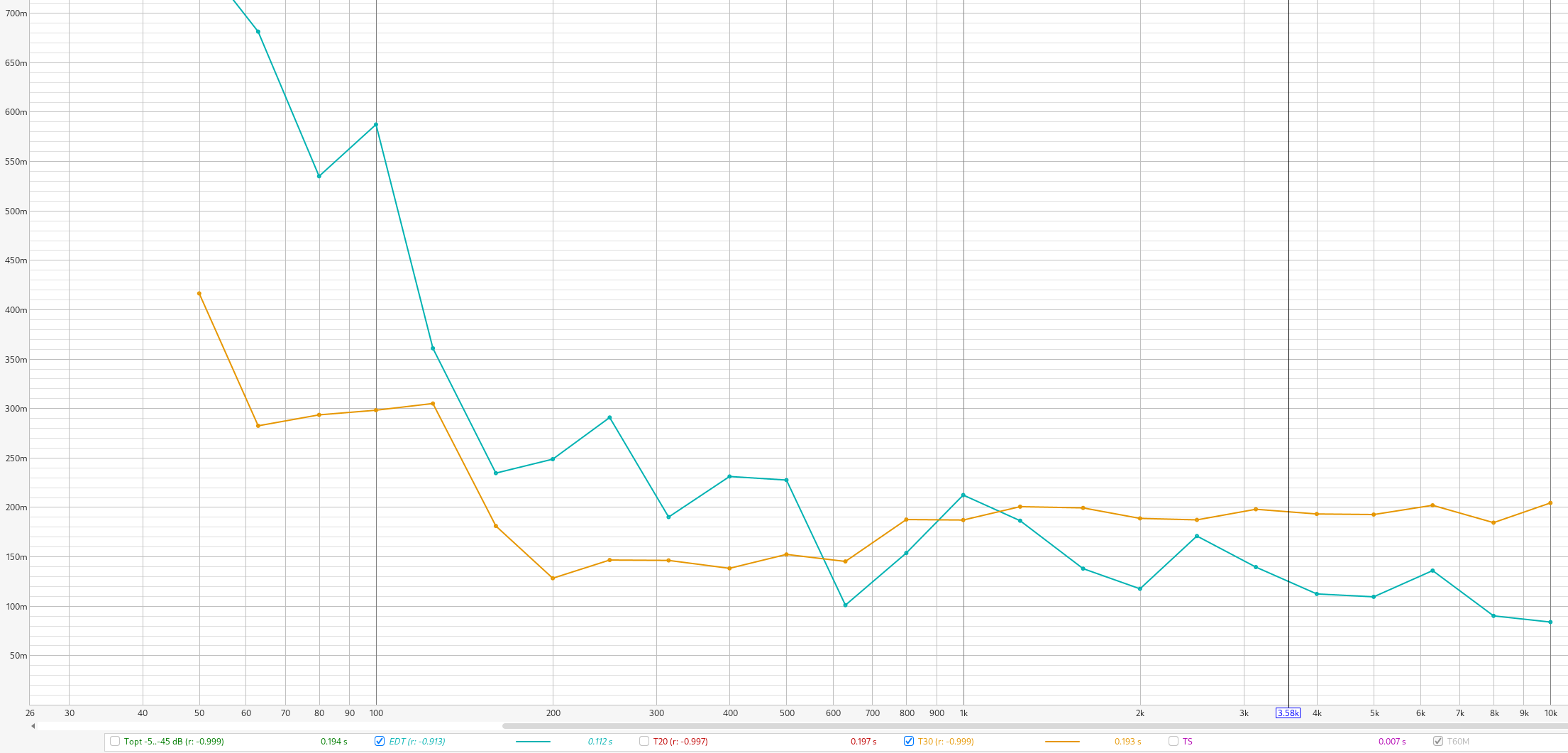
We can see how much difference acoustic treatment makes. The music room - heavily treated, having a flat RT60 (T30) <200ms from 150Hz to 10KHz. Close to a pro mixing studio or amateur mastering studio. The hard to manage bass is at most 300ms from 60 to 125Hz, reaching a maximum of 425ms at 50Hz.
In the living room, despite attempts at absorbing discretely, we average 400 to 500ms from 200Hz to 10KHz (which is still decent for a non-dedicated room).
